Starting late 2015, a set came to Weiss Schwarz which formally and truly cemented the modern deck-building experience. To-Love Ru Darkness came out in full swing, carrying many staples from previous sets while organizing them into a proper formulated consistent deck.


Unlike previous sets released in the game, Yami was a far more adamant finisher during her time. Whereas other decks required strong power for reverse abilities, or they would simply heal their way down to try and stall the game longer, Yami was designed to indefinitely kill your opponent.
Yami was also hex-proof, making it quite difficult for your opponent to deal with, getting around most defensive measures at the time. Whereas other decks would deal extra instances of damage, Yami focused more on ensuring that damage stuck on your opponent’s clock. Your opponent would require significant amounts of climaxes in their deck or need to survive large swings in order to stand a chance.
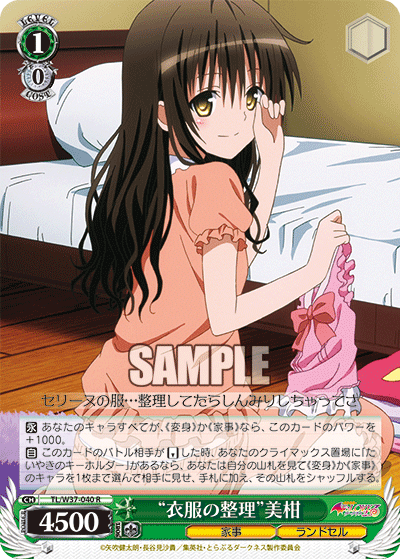

Furthermore, the old Shimakaze profile from Kantai had been upgraded further. Now Shimakaze combos were reaching a good base 5500 on their own (vanilla 1/0 power) and carried a combo with a 1k1 rather than a 2k draw. This meant that soul could be evenly distributed across characters and damage could be widespread.
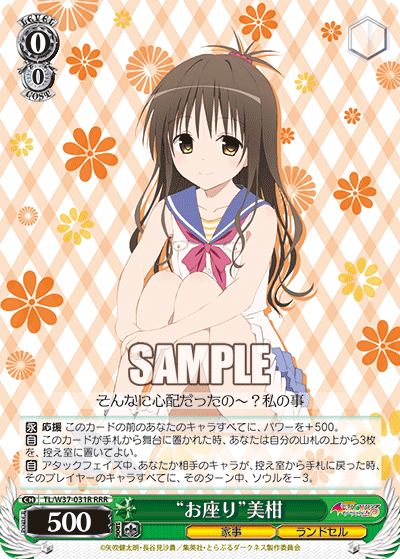
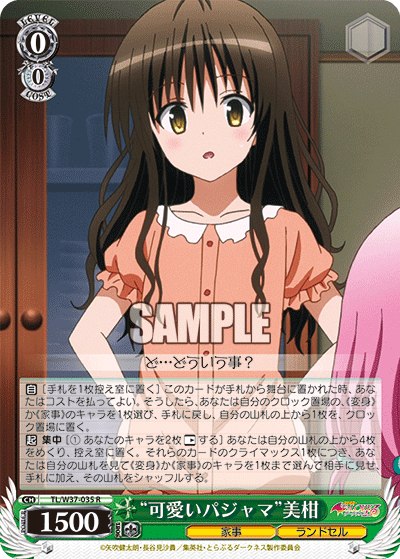
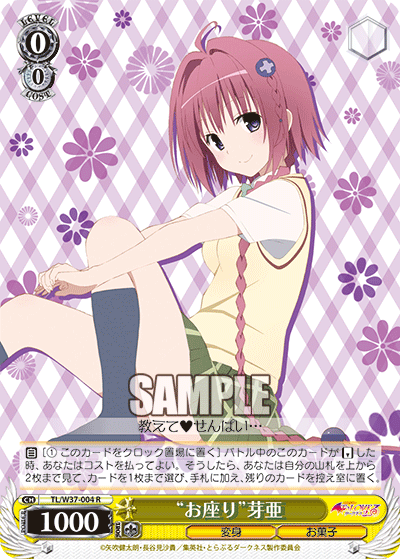
TL/W37-035R “可愛いパジャマ”美柑 (center)
TL/W37-004R “お座り”芽亜 (right)
Card effects were beginning to be stacked further on one another with abilities beyond that of simple power provisions. The set had access to multiple means of forcing additional hand or filtering with other beneficial effects tied to the same card. The game was becoming more efficient with individual cards performing multiple roles rather than just a single base effect.


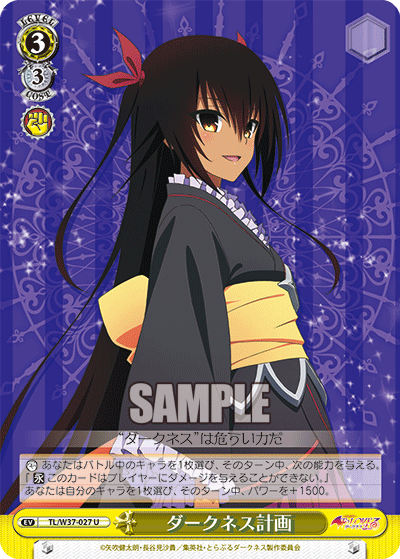
TL/W37-010U “リボンでラッピング”芽亜 (center)
TL/W37-027U ダークネス計画 (right)
On top of having improved card effects, the set had access to various cards to help defend and maintain field as shown above. 1/0 2000 powered counters were starting to become a norm to help defend against other on-reverse combos. On top of it all, the set also had access to a money counter to completely mitigate damage from a swing, an extremely rare profile at the time.
I understand that in this article, the focus was primarily on that of the yellow/green Transformation/Household deck. However, from this point moving onward, decks were becoming much more organized. Having a deck whose traits all worked together was becoming an expected normality. Finishers were becoming far more deadly. Card quality was improving at a breakneck speed with singular role cards becoming far less common. If Nisekoi could be considered as the pioneer of the modern format, To-Love Ru could definitely be considered as the defining image of it.